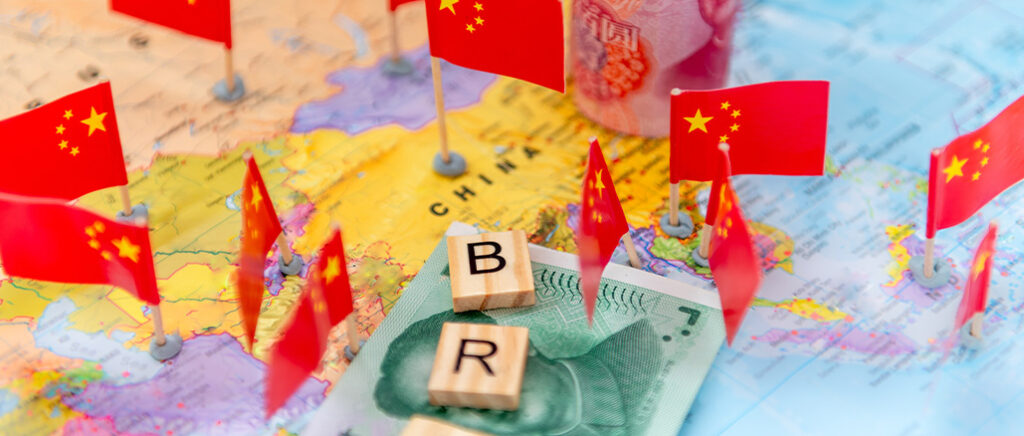In the 21st century, warfare is no longer limited to the battlefield; it has evolved into a mix of economic, political, and strategic manoeuvres. China’s Belt and Road Initiative (BRI) is one such instrument that raises pressing questions: Is it a pathway to economic prosperity or a geopolitical strategy rooted in Hybrid Warfare.
Introduction to Hybrid Warfare
Hybrid Warfare is a contested and evolving concept, with scholars and policymakers offering varying definitions. Hoffman (2007) originally conceptualized Hybrid Warfare as a strategy that blends conventional military operations with unconventional tactics, including terrorism, cyber-attacks, propaganda, and economic coercion. Renz and Smith (2016) further expanded this definition, arguing that Hybrid Warfare is not limited to military applications but extends to political and economic instruments used to weaken adversaries without triggering a formal state of war. The key characteristic of Hybrid Warfare is its ambiguity—aggressors exploit legal and normative grey areas to exert influence while maintaining plausible deniability (Mumford, 2013). This essay examines the extent to which the BRI aligns with Hybrid Warfare, exploring China’s use of debt-trap diplomacy and its implications for global security, particularly through the People’s Liberation Army (PLA).
Debt-Trap Diplomacy and Military Leverage
There are indications that China uses debt-trapping while conducting BRI business with other countries as Chellaney, B (2017) reveals that China saddles poorer countries with vast amounts of debt which in turn leads them to being under Chinese influence, geo-politically speaking. The concept was recently covered by MI6 Chief Richard Moore, as Bowden, G (2021) tells us debt-trapping is China’s way of getting people on a financial hook to exert leverage. To summarise, debt-trap diplomacy refers to a situation where a creditor nation lends excessive amounts to a borrowing country, knowing that the latter will struggle to repay, thereby allowing the creditor to extract strategic concessions (Chellaney, 2017).
Case Study 1 – Sri-Lanka
Sri Lanka’s experience with the BRI is one of the most cited examples of debt-trap diplomacy. In 2007, Sri Lanka secured a Chinese loan to build the Hambantota Port, despite feasibility concerns. By 2017, unable to meet repayment obligations, Sri Lanka leased the port to China for 99 years in exchange for debt relief (Maluki & Lemmy, 2019).This lease raised national security concerns, as control of a strategically positioned deep-sea port in the Indian Ocean offers China a maritime foothold close to India and key international trade routes. Critics, including Bowden (2021), argue that while China denies military intentions, the port could eventually serve PLA Navy operations, enhancing China’s blue-water naval capabilities in the Indian Ocean.
Case Study 2 – Djibouti
Djibouti hosts military bases for several global powers, including the United States, France, and Japan. However, in 2017, China established its first overseas military base in Djibouti, citing logistical support for BRI projects in Africa (Clarke, 2018). China’s economic leverage over Djibouti is significant—over 70% of Djibouti’s external debt is owed to China (Stutz & Kaiser, 2020). This financial dependency has facilitated Beijing’s long-term military ambitions, with Djibouti becoming a key node in China’s expanding global military network. The PLA base in Djibouti has direct access to the Bab el-Mandeb Strait, a critical chokepoint for global trade. Its plausible to suggest that China’s presence there could disrupt Western military logistics in the region, altering the balance of power in the Horn of Africa.
The Counter Argument
While these cases studies do outline the potential for the People’s Liberation Army to benefit through the economic arm of Hybrid Warfare, there is no clear evidence this is the case. There are many in the academic and political fields that refute the allegation, accusing the West of pushing an overstated narrative that is based on geopolitical concerns rather than empirical data (Shaomin & Jiang, 2020). Agreeing with this, Maluki & Lemmy (2019) argue that accusations of debt-trapping are often politically motivated, particularly by Western policymakers seeking to counter China’s rise.
Conclusion
The cases of Sri Lanka and Djibouti demonstrate that Chinese economic investments can lead to significant geopolitical influence, but they do not definitively prove that China is engaging in a calculated debt-trap strategy. While there are valid concerns about sovereignty, military expansion, and strategic dependencies, there is still no irrefutable evidence that China intentionally designs its lending practices to entrap nations.
If China’s lending model continues to expand without adequate oversight, the potential for financial dependence and strategic leverage will remain a pressing issue. The cause and effect of this will be that the perception of debt-trap diplomacy remains strong, the long-term geopolitical implications of Chinese economic influence warrant continuous scrutiny and debate.
Moving forward, further research and transparency in Chinese loan agreements will be crucial in determining whether these investments are purely economic or serve as a tool for Hybrid Warfare and strategic expansion. It is imperative that such an endeavour remains free of the bias and politically driven narratives from both Washington D.C and Beijing.
Lewis Jones
PhD Researcher
University of South Wales, United Kingdom
References
Bowden, G. (2021). China’s debt diplomacy: A strategic challenge?. Global Policy Review, 14(2), pp. 42-57.
Chellaney, B (2017) ‘China’s Debt Trap Diplomacy’, Project Syndicate. [Online] Available at : https://www.project-syndicate.org/commentary/china-one-belt-one-road-loans-debt-by-brahma-chellaney-2017-01
Maluki, P. & Lemmy, N. (2019). Belt and Road Initiative: A Geopolitical Strategy?. African Journal of International Relations, 9(1), pp. 14-30.
Renz, B. and Smith, H. (2016). ‘Russia and Hybrid Warfare – Going Beyond the Label’, Aleksanteri Papers, 1, pp. 7-14.
Hoffman, F.G. (2007). Conflict in the 21st Century: The Rise of Hybrid Wars. Potomac Institute for Policy Studies.
Available at: https://www.potomacinstitute.org/images/stories/publications/potomac_hybridwar_0108.pdf
Hoffman, F.G. (2006) ‘Complex Irregular Warfare: The Next Revolution in Military Affairs’, ORBIS, pp. 395-411, 50 (3). [Online] Available at: https://www.sciencedirect.com/science/article/pii/S003043870600041X
Mumford, A. (2013). ‘Proxy Warfare and the Future of Conflict’, The RUSI Journal, 158(2), pp. 40-46. [Online] Available at: https://doi.org/10.1080/03071847.2013.787733
Stutz, M. & Kaiser, J. (2020). China’s influence in Africa through debt dependency. Economic Diplomacy Journal, 18(4), pp. 9-23.
Clarke, M. (2018). The Belt and Road Initiative and China’s strategic ambitions. Asian Security, 14(2), pp. 86-100.

